Mondly Review: My Experience Using Mondly to Learn 5 Languages [In-Depth Review]
What is Mondly?
Mondly is a language learning app that claims to help you “play your way to a new language” and get you speaking “faster than anyone else.”
- what it’s for:
- Real-world vocabulary and phrases
- languages:
- English, Spanish, French, German, Korean, Japanese, Italian, Chinese (Mandarin), Arabic, Russian, Portuguese, Dutch, Turkish, Polish, Hebrew, Swedish, Tagalog, Thai, Hungarian, Czech, Cantonese, Vietnamese, Persian, Greek, Hindi, Finnish, Danish, Croatian, Indonesian, Slovak, Ukrainian, Latin, Afrikaans, Lakota, Latvian, Lithuanian, Romanian, Bulgarian, Bengali
- level:
- Beginner - Advanced
+ PROS
- Uses words and phrases spoken in real-world situations
- Motivational features to keep users engaged
- Detailed statistics to evaluate time spent on the app
- Great audio quality
- Good diversity of languages covered
- CONS
- Limited free version with frequent prompts to upgrade
- No grammar lessons
- Exercises can get too easy
- Not much sense in the lesson order
Last Updated November 2020
Recently, I’ve spent more and more of my language learning time on my phone. It’s convenient. I almost always have it with me and there are loads of apps that are available. Even with just five minutes to spare, I can squeeze language learning into my day.
And because I’m doing so much language learning on my smartphone, I’m constantly testing different apps to see which are the most effective.
In this review, I’ll look at Mondly, one of the best-known language learning apps. Before writing this review, I used it to help one of my newer languages (German), improve one of my okay languages (Japanese), and to support one of my better languages (Croatian). And since originally writing this review, I’ve gone back to try it out for Hungarian, Russian, and Persian.
What is Mondly?
Mondly is a language learning app that claims to help you “play your way to a new language” and get you speaking “faster than anyone else.” It’s been designed by combining principles of neuroscience with cutting edge technologies.
Alex Iliescu and Tudor Iliescu founded Mondly in 2013. The company is headquartered in Brasov, Romania and the team behind the app is always growing. According to their website, at the time of writing they have over 40 million users.
The Mondly app uses a combination of course materials, augmented reality (AR), and chatbots to help learners master a new language. They currently support 41 languages that can be used in any combination. This means that you don’t necessarily need to learn from English. Instead, you can learn Russian through French, Thai through Spanish, or whatever other combination best suits your needs. It’s most recent additions include Bengali, Catalan, Latin, Latvian, Lithuanian, Slovak, Tagalog, and Urdu.
The Different Ways to Learn a Language with Mondly
Mondly offers a variety of options for learning a language:
- Mondly is the primary language learning app created by the company and is what I will focus on as a part of this review.
- MondlyWORKS is a version of Mondly available to businesses with bulk subscriptions and dashboards to help employers track the learning progress of their employees.
- MondlyVR is Mondly’s virtual immersion tool. It’s very similar to the Chatbot in the Mondly app, but using VR technology, you’re put into a simulated situation. So if you’re practicing the “Restaurant” chat, VR puts you in a restaurant with a waitress. If you’re having the “Hotel” chat, you’re at a reception desk.
- MondlyAR takes a scan of your room and then uses augmented reality (AR) technology to show a teacher and animations for the words that you’re learning. It’s very similar to a classroom lecture, but you don’t have to sit at a desk. Instead, you can interact with the animations, tapping them on your device or even getting up to walk around and get a 360 view.
- MondlyKIDS is very similar to the main app, but the illustrations used are more kid-friendly and fun.
- Oxford Assessments are special lessons in Mondly, based on Oxford Practice Grammar tests and the Oxford 3000. These practice tests and lessons follow CEFR guidelines.
For the original version of this Mondly review, I decided to try the app with a relatively new language (German), an intermediate language (Japanese), as well as with one of my stronger languages (Croatian). I wanted to see what levels the app is most appropriate for and test the material with languages from three different language families.
Getting Started with Mondly
To start learning with Mondly, you don’t need to sign up for an account. You can just head to their website or download the app and start learning.
If you’d like to use the app across multiple devices or save your learning data, however, I would recommend setting up an account.
To sign up, you select the language you’d like to learn from (i.e. English), the language you’re learning, and your level.
You are then taken through a sequence that asks for your name:
Your email:
And to create a password:
You can also connect your account to Facebook or Google so that you can sign in that way as well.
Once you’ve signed up (or before if you choose not to sign up), you can complete a tutorial. The first half of the tutorial is a series of screens that show you the basic features of the app before prompting you to activate a paid subscription on the final screen. If you’re not ready to upgrade, you can click “Skip” up in the top right corner. If you choose to go through the tutorial, you’re then shown a sample conversation before you dive in and start learning some basic vocabulary and phrases.
This first learning sequence is short, designed to give you a quick “taster” of what learning with Mondly is like. You’re given points and shown your stats for your first learning session. You can then click “continue” to keep learning.
With a free account, your options are limited. You have access to the “Hello” topic which includes seven lessons as well as a daily lesson.
The daily lessons unlock every twelve hours, and if you complete an entire week of daily lessons, you unlock a more lengthy weekly test. If you miss a day, however, you don’t get access to the weekly test. And if you complete each weekly quiz, you can also unlock a monthly challenge. Getting access to extra learning material is definitely great motivation for coming back each day and keeping up your studies!
Signing up for a paid account unlocks the remaining lessons. The categories or topics include:
- Hello (this is unlocked with a free account)
- Core Vocabulary
- Family
- Countries & Languages
- Romance
- Seasons & Weather
- Preparing a Trip
- Travel
- Vacation Activities
- Public Transportation
- Food & Drinks
- School
- Sports
- Introductions
- Pets
- Entertainment
- Shopping
- Around the House
- Grammar 1
- Grammar 2
- Grammar 3
- Airport 1
- Airport 2
- Hotel: Reservation
- Hotel: In the Room
- Restaurant 1
- Restaurant 2
- Restaurant 3
- Restaurant 4
- City Tour
- Bank
- Business
- Fun
- Help!
- Doctor
- Emergencies
- Animals
- Fruits & Food
- Colors & Numbers
- Parts of the Body
- Access to all of the past daily lessons currently dating back to 2015
- Chatbot
- AR (only for certain languages – it was available in German, but not Japanese or Croatian)
Even though the topics appear in a specific order, you’re free to complete them in the order you feel is best. For example, after completing “Hello”, I jumped over to “Introductions” and then to “Numbers & Colors”. You can also bounce around and try out the Chatbot or AR – if it’s available for the language you’re learning.
When you start a lesson, you’re given three stars. If you make a mistake, the first star is removed. Same with the second. With the third star, you have a couple of chances before you lose the third star and have to repeat the lesson.
You’re awarded points based on how many stars you have left at the end of the lesson. If you would like to improve your score and earn more points, you can repeat a lesson. Why might you want more points? As you earn more points, you reach new levels in the app and rank higher on the Leaderboard. You can compare how much of your language you know with other learners by seeing where you rank on the Leaderboard. You can view your score against your friends, the country you’re in, or the world.
Your rank can be sorted by total points earned or longest learning streak, the month or all time.
My Experience Using Mondly
As I mentioned earlier, I used Mondly to study German, Japanese, and Croatian and then later, Hungarian and Persian. I started with German and spent most of my time with this language because it is my current focus. I completed all of the topics relevant to me, skipping things like sports since they’re not really subjects I talk about.
For the most part, I learned a lot of new vocabulary and materials. At times, however, I struggled with some of the phrases and translations. You’re not taught grammar rules of the language you’re learning, so with languages like Croatian you see pas for dog but when it’s put into a sentence you’re working with psa. You’re never shown why this is, so if you’re a beginner in the language, this may be confusing.
With German, I ran into another issue with the translations. In one context, “I want to” was translated as Ich möchte, in another it was Ich will. I saw gern used for “like” but then other translations in other places. It made it difficult to feel confident using what I learned in the app. I couldn’t use any chunks of the language I learned outside of the exact translation of the entire phrase I was given unless those parts were something I had seen elsewhere.
You can, in certain lessons, click on verbs to see the different conjugations for them, but this isn’t available in all lessons – for example the Core Vocabulary module (at least the lessons I played).
In contrast, I enjoyed learning with the chatbot. While the responses available to you are limited, it gives you the chance to roleplay in a variety of situations you may find yourself in with your new language. These include: Hello, Restaurant, Hotel, Tickets, Conversation, Shopping, Appointment, and Taxi.
It’s different than other language chatbots I’ve tried because you don’t just select a reply or type it in, you record it. For the set phrases, Mondly’s voice recognition is fairly accurate. It even worked well while I had music playing in the background. But, if I tried to get creative with my replies, it often didn’t understand what I wanted to say.
If I stuck to the suggested answers, however, I had very little trouble getting it to recognize what I said and it was a fun way to practice German.
When setting up my preferences for Croatian, I selected “intermediate”. Doing this didn’t change what material was available to me. Instead, it made the first screen I saw a few topics down the learning path.
A lot of the material was not challenging enough for me with a more advanced language, so it made sense for me to spend more time using the app with languages like German and Japanese where I needed more support.
It was also interesting to see how Mondly handled teaching languages with different writing systems. As I mentioned, I also tried the app out for Japanese, Persian and Russian, all of which have different writing systems.
Mondly doesn’t teach you the writing system. It does, however, have an icon in the top right corner that lets you toggle between romanization and the writing system for the language you’re studying. It’s enough to help you get familiar with the letters if you don’t leave it set to romanization but just toggle it on to reference.
Mondly: The Good
Mondly teaches you very useful vocabulary and phrases. The material you learn consists of words and phrases you’re actually likely to use, in real-world situations. You learn things like “I need to reschedule my appointment” and “Do you have any hobbies?” There are many helpful sentences you learn that can be used in a variety of contexts.
There are also a lot of features that help you stay motivated and coming back to learn. These include the daily lesson. You get a lot of variation in the material you learn with the daily lesson and if you miss one, you lose out on the weekly quiz (and then monthly quiz!). You also have detailed stats presented to you as a part of a beautiful and interactive illustration. You’re shown the total time you spend in the app, how many days in a row you’ve studied, your overall progress, and the number of words and phrases you’ve learned.
The quality of the audio is also great. They use real voice actors to record the audio, so you practice your listening comprehension with real speakers and not a computer-generated voice.
Additionally, Mondly supports 41 languages including some that can’t be found on competing apps such as Afrikaans, Vietnamese, Korean, Russian, Romanian, Greek, Finnish, Latvian, and Bulgarian.
Mondly: What Could Be Better
The free version of Mondly is limited and you are frequently prompted to upgrade to Premium. You get one topic with seven lessons called “Hello” and one free daily lesson, though you’re not getting the same experience with the daily lesson as you would with the Premium topics.
There are much fewer interactions than there are with the Premium lessons, so your total time studying per lesson is much less. If you’d like to learn quickly, Premium is certainly a better option.
Mondly also doesn’t teach grammar. This means that when you see new phrases in the exercises, they can be impossible to answer correctly because you’re not given any context or examples. That is, if you have the audio off.
If you have the audio on, however, many of the exercises are too easy because you hear the correct answer before you are required to do the exercise. This means you don’t need to know the answer to complete the exercises correctly. This only happens with the sentence exercises, however. When you’re tested on single vocabulary words in the multiple-choice interaction, you don’t hear the audio until you select an answer. But you do in the spelling interaction. Either way, because of this, I ended up turning off the volume so that I could answer based on what I knew. But because I did that, I lost valuable listening practice because I couldn’t the audio to know how everything should be correctly pronounced. I also had to turn the volume back up for listening comprehension exercises and then turn it back down which didn’t do much for the experience of using the app.
I also found that the lesson order didn’t make a lot of sense. Many of the basics like introductions, colors, and numbers are towards the end of the learning path they designed whereas topics like romance are closer to the beginning. You can, however, complete the topics in your own order rather than the suggested order, so that’s exactly what I did.
Mondly Review: Conclusion
If you’re just starting out with a language, or even starting over, Mondly offers a lot to help. It has a lot of fantastic and useful vocabulary and phrases for a beginning language learner, and even lower intermediate. It’s engaging, enjoyable to use, and has several features built-in to keep you motivated to learn. And if a resource keeps you learning and spending time with your language, then it’s a good resource to use.
Plus, the lessons are quick, so you can always fit them in – no matter how busy you are. It certainly helped me spend more time on the basics with each of my languages, and that’s always a good way to keep your foundation in the language strong.
That said, Mondly does have a few things that need to be addressed in order for it to become an even better app.
Would you like to try Mondly out and see if it’s a good fit for you? Try Mondly here.

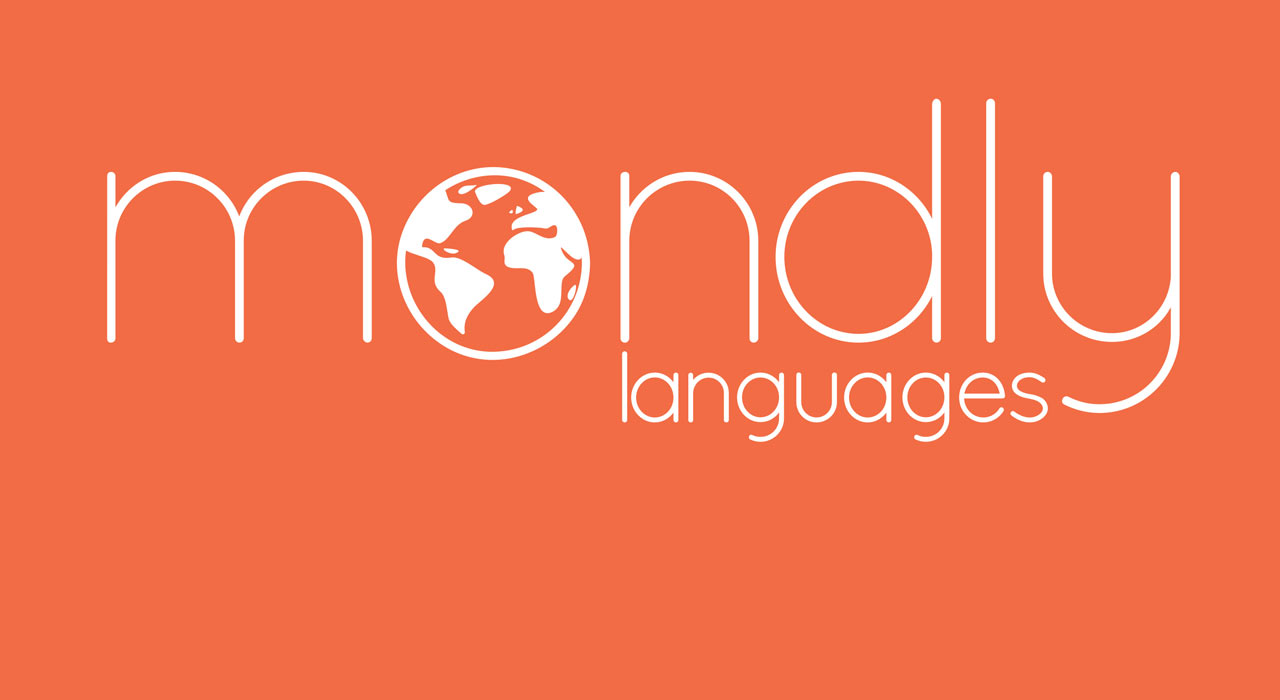
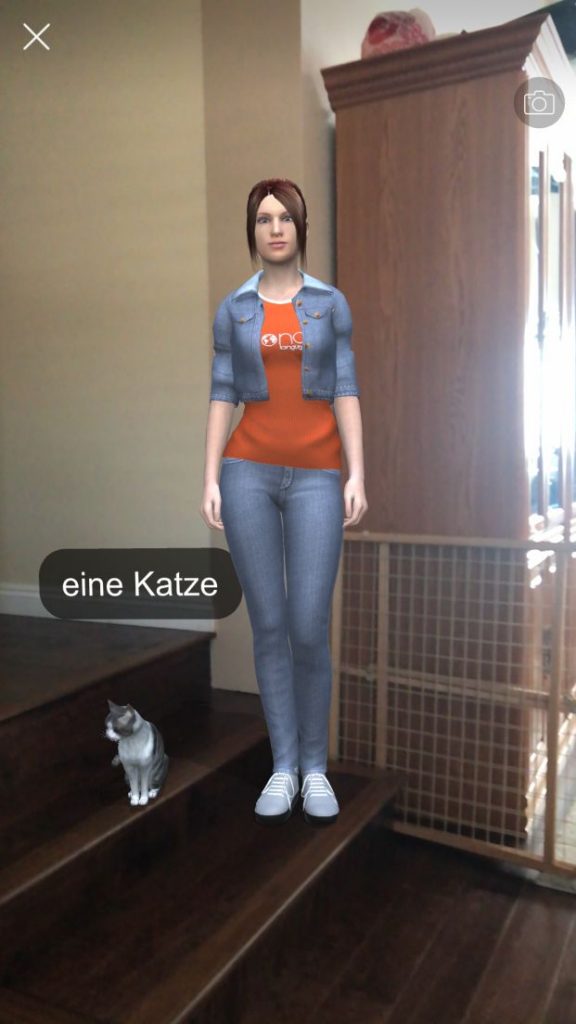
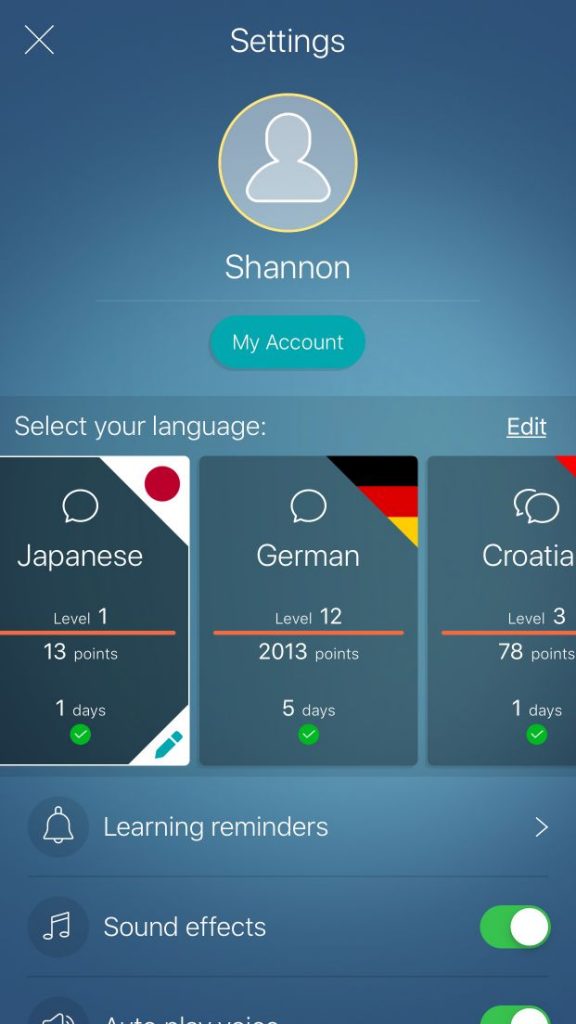
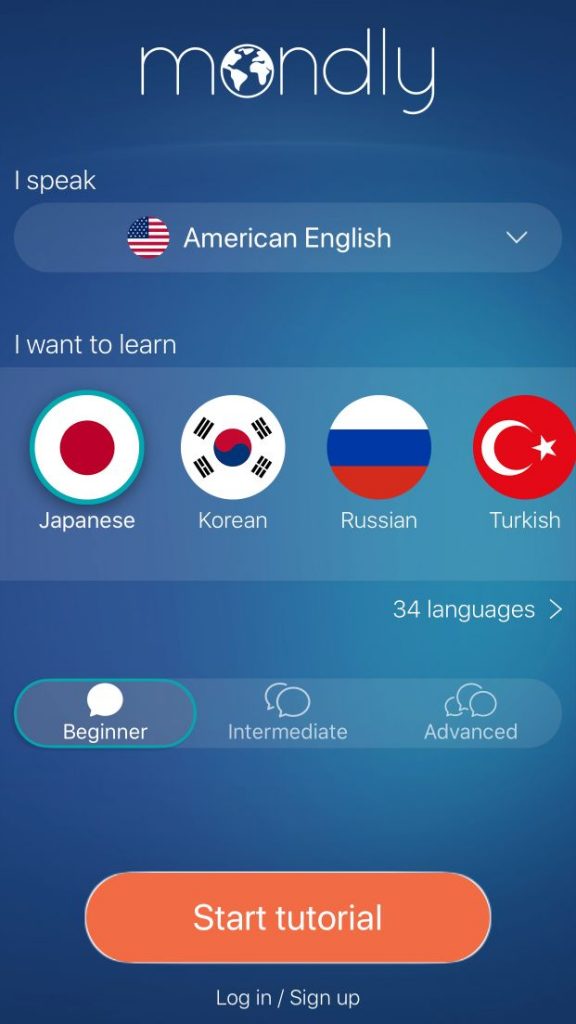
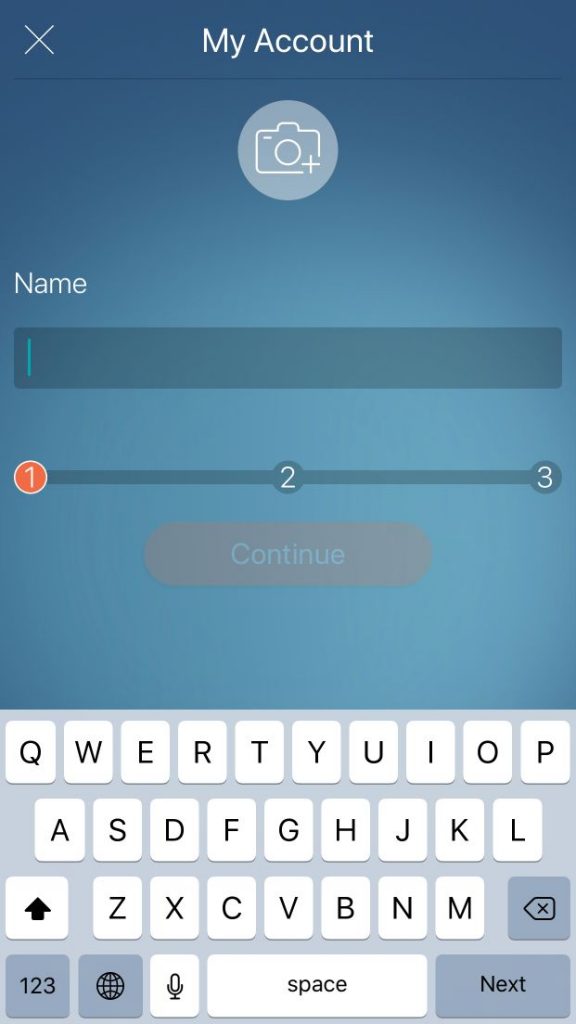
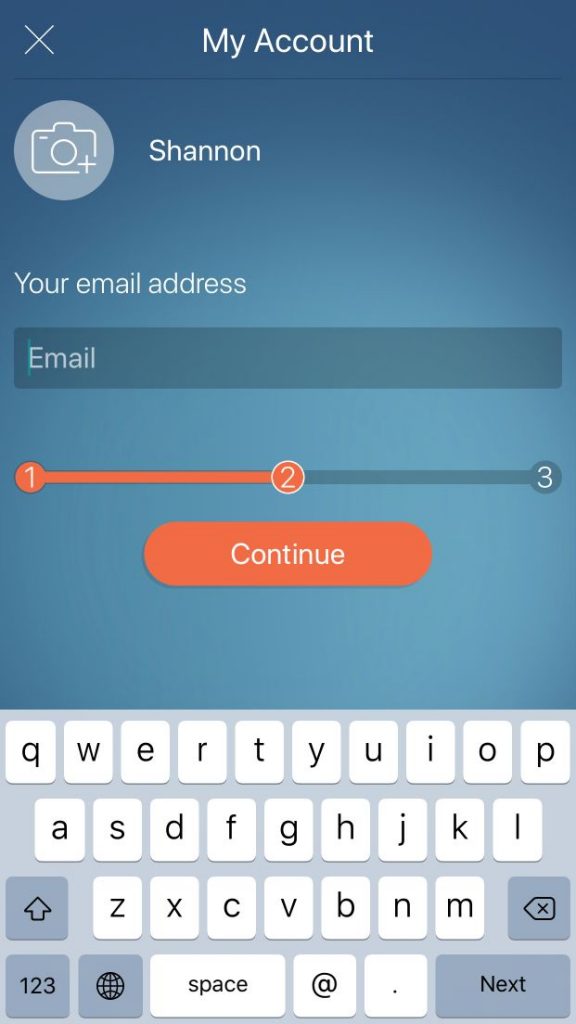
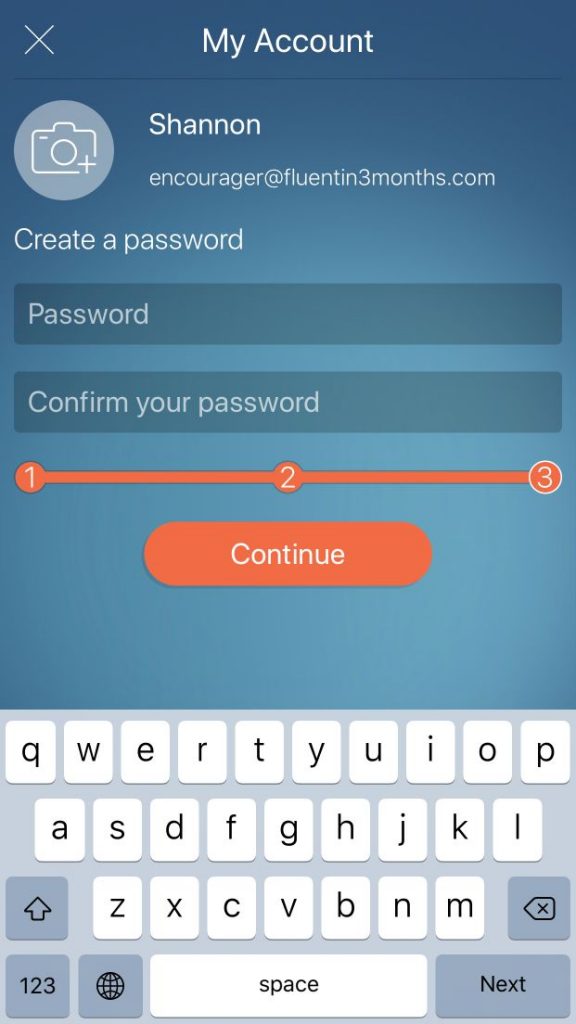
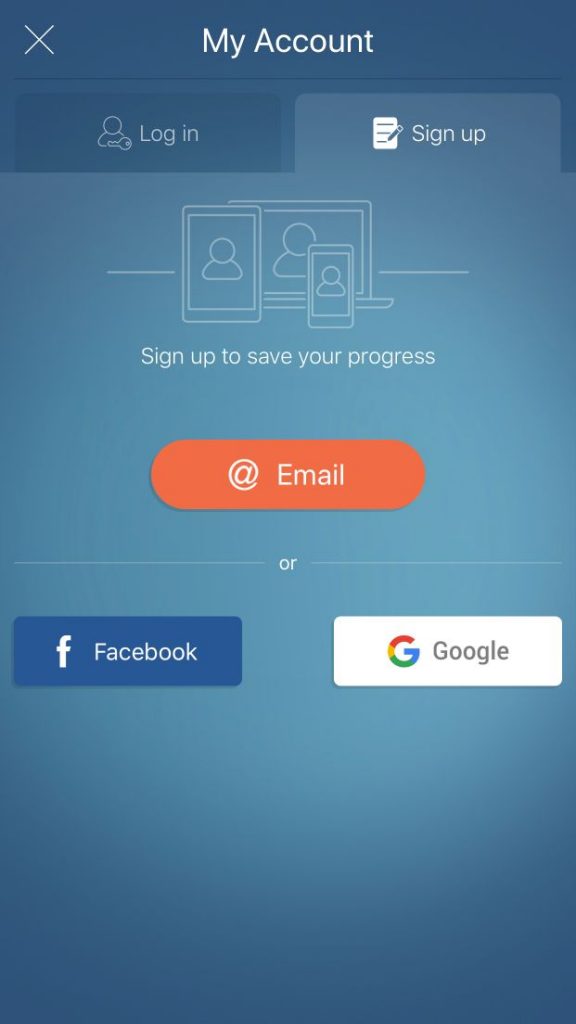
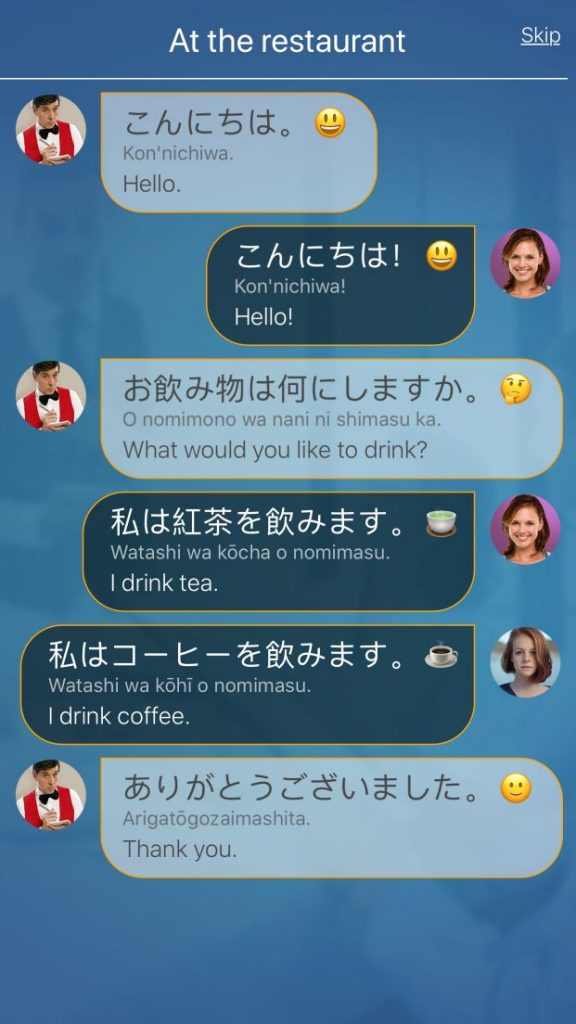
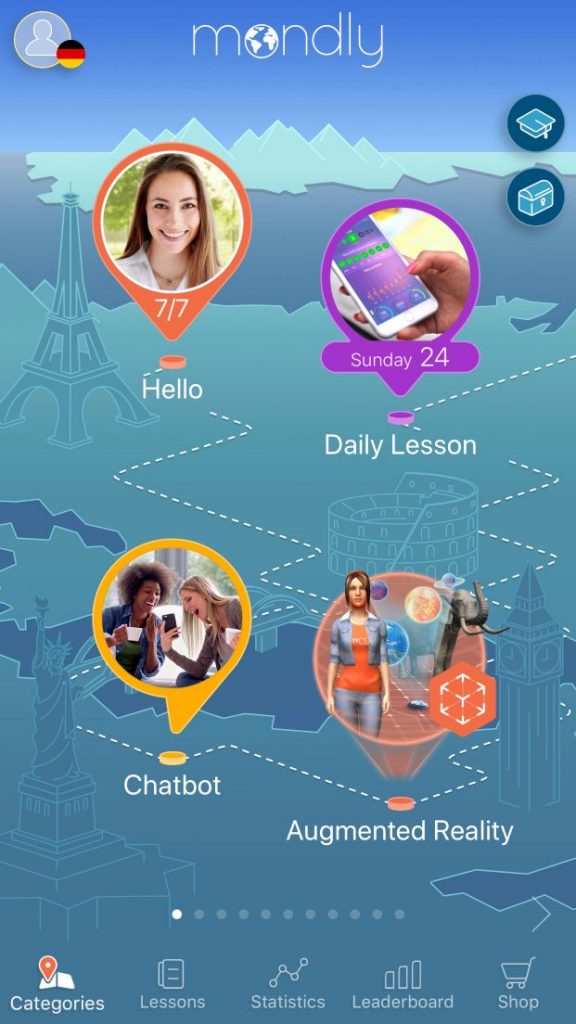
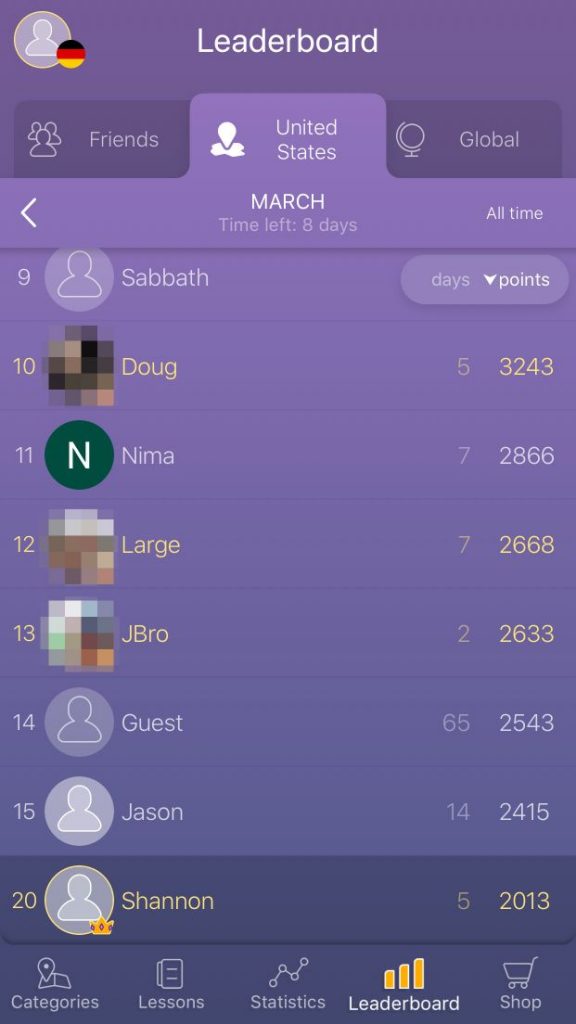
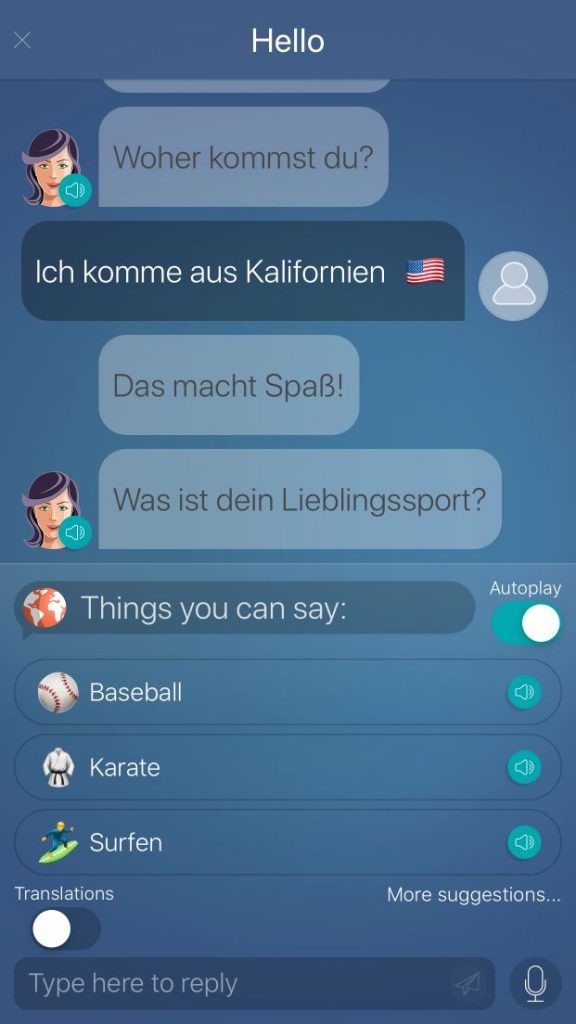
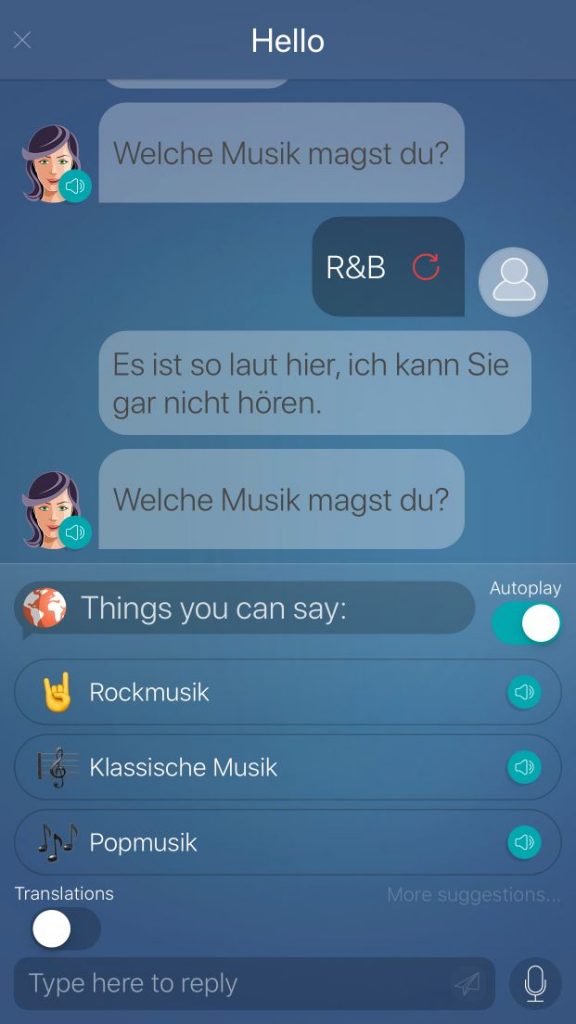
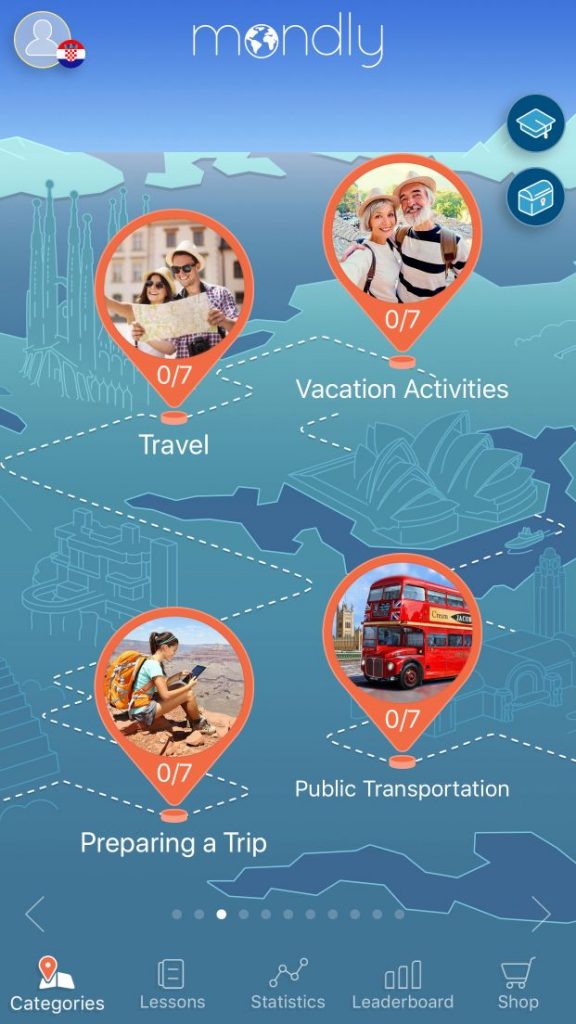

Social